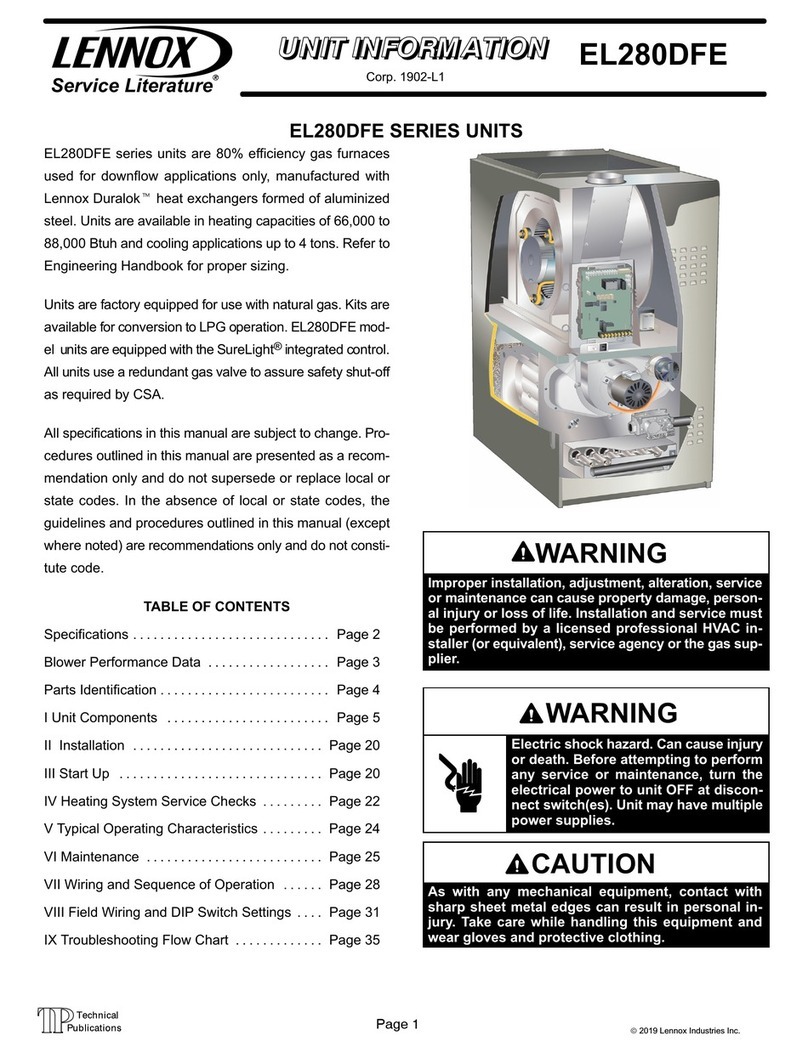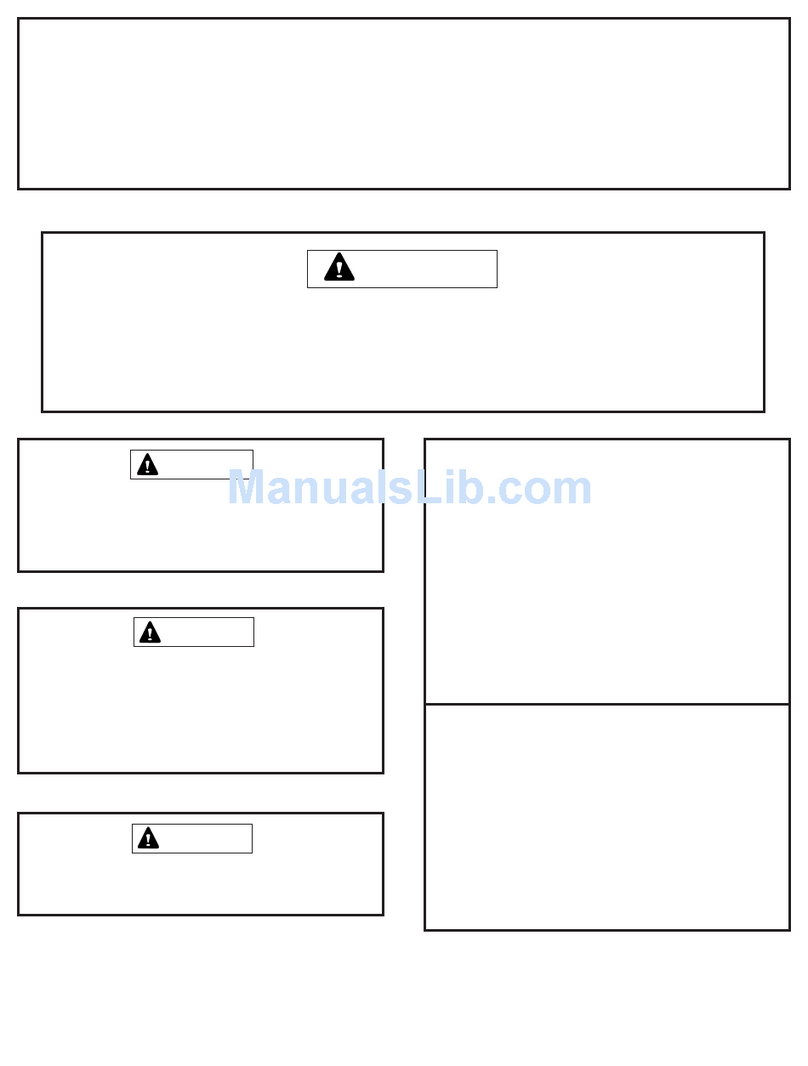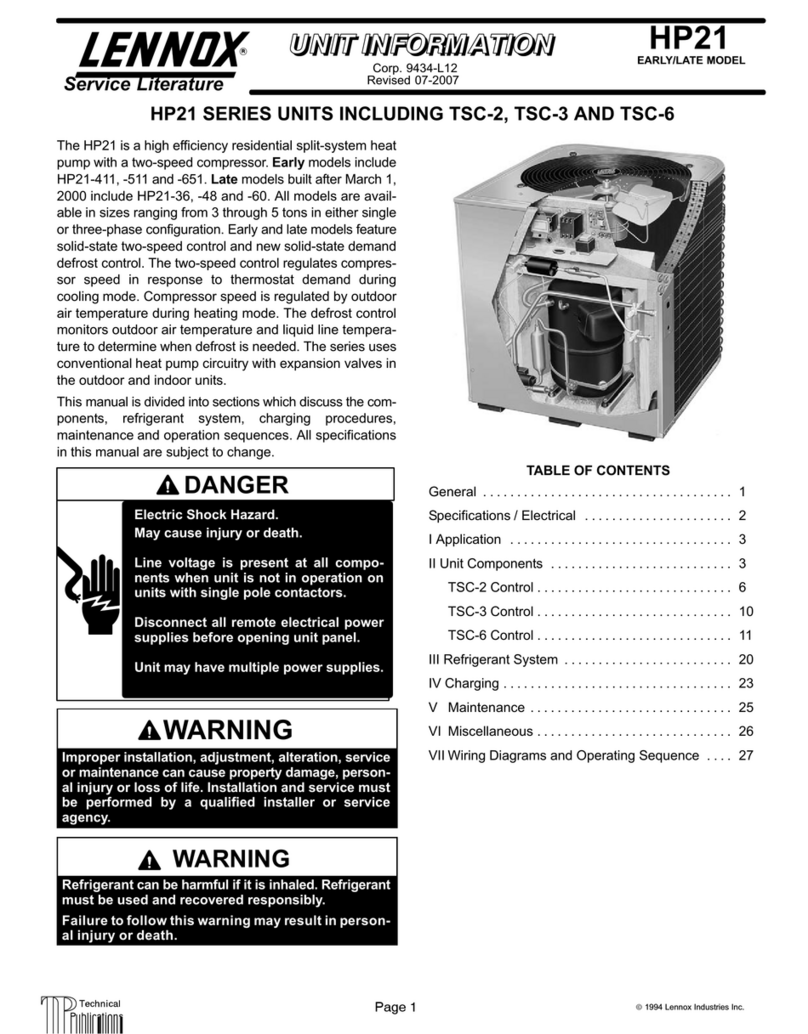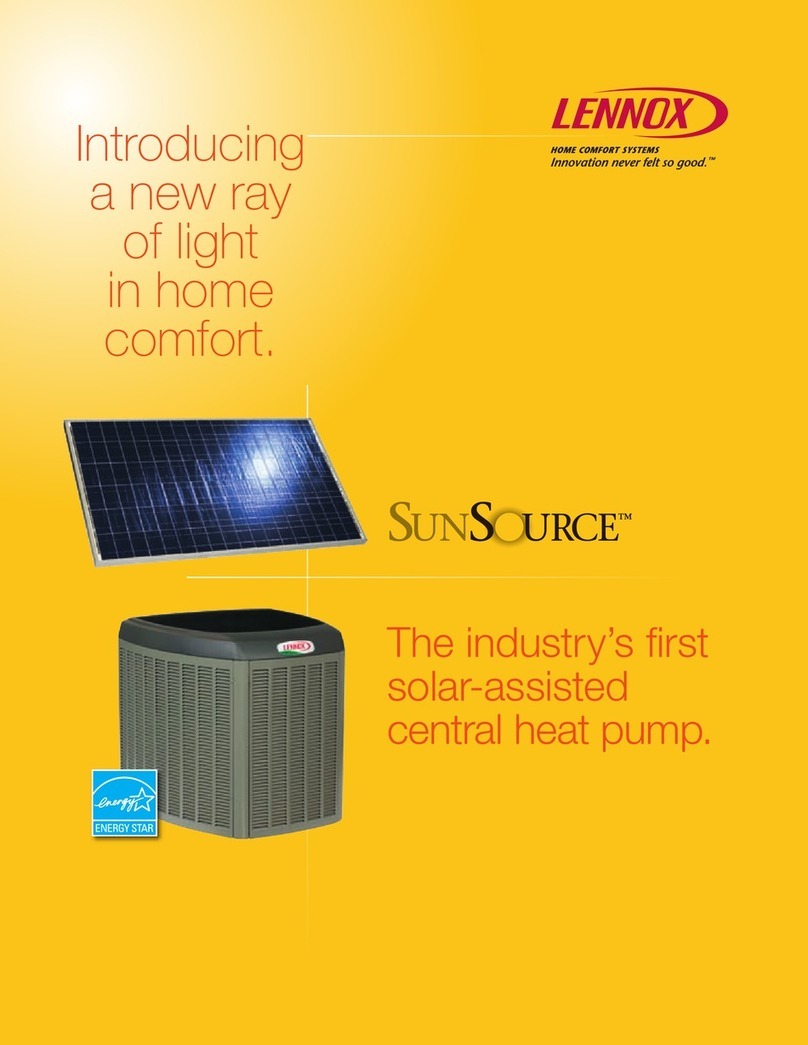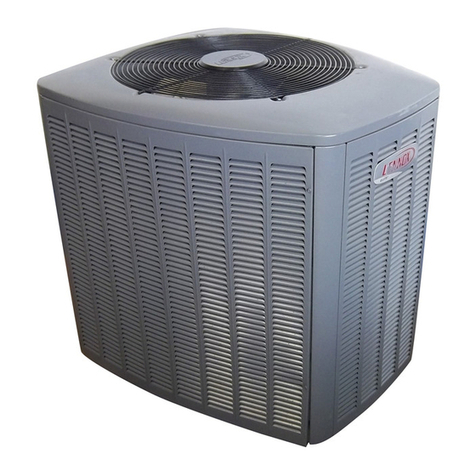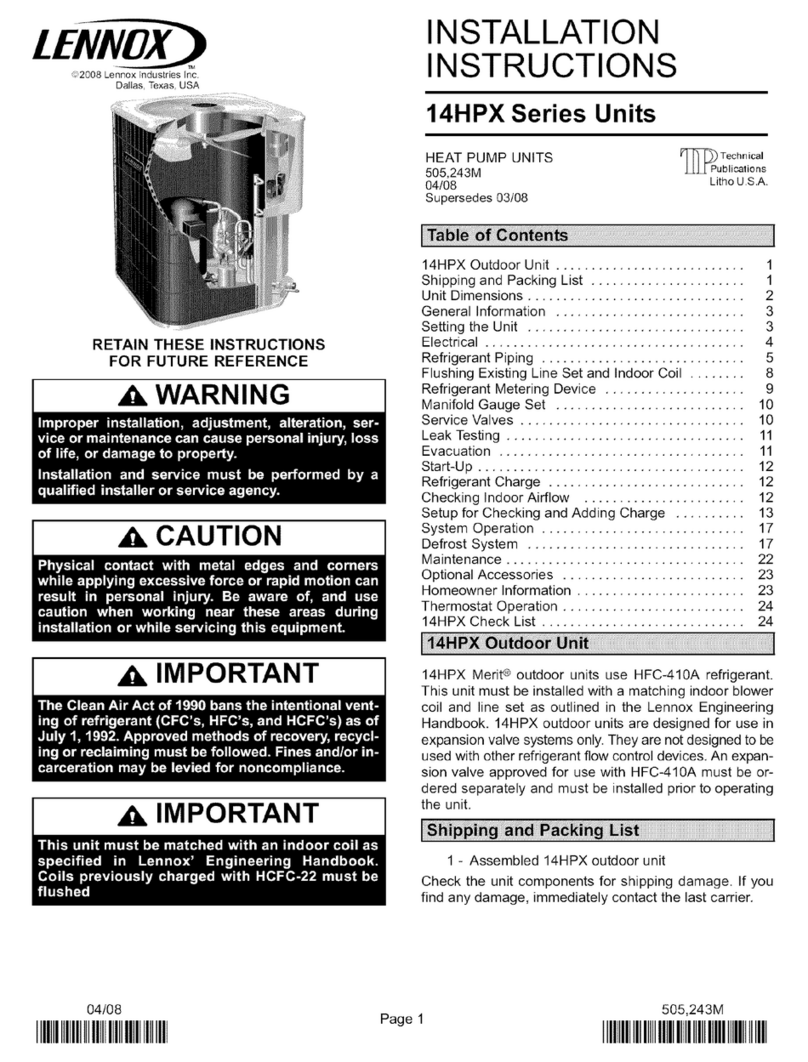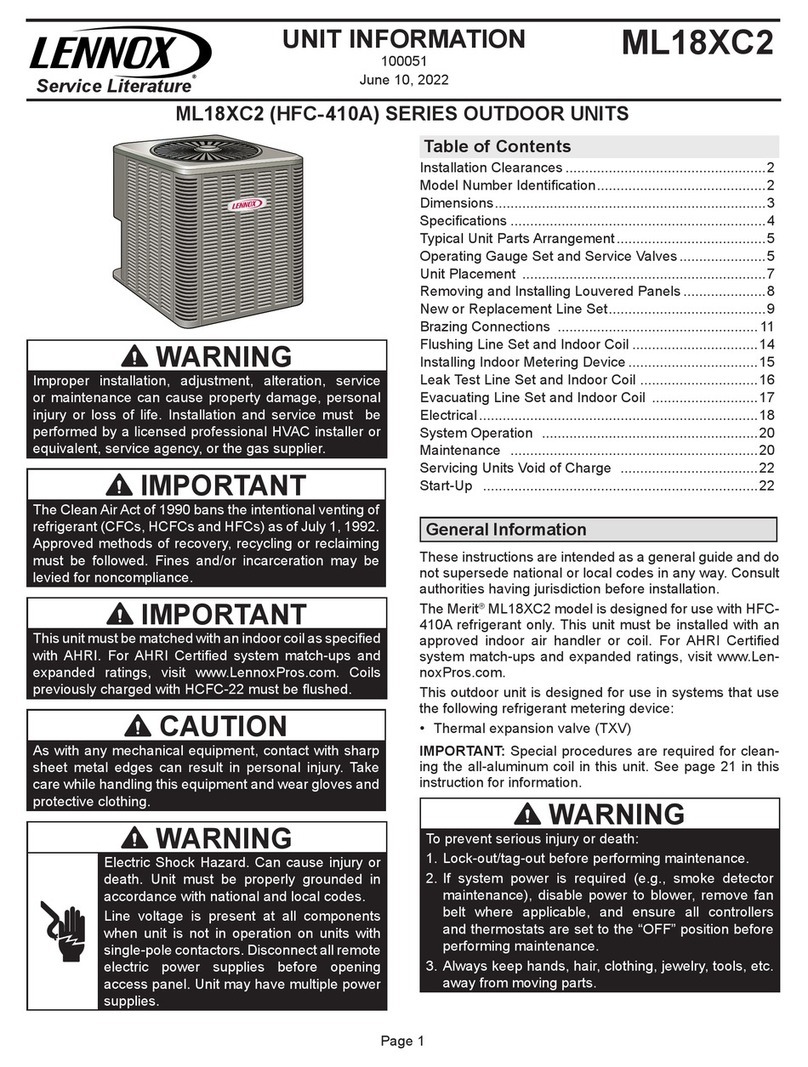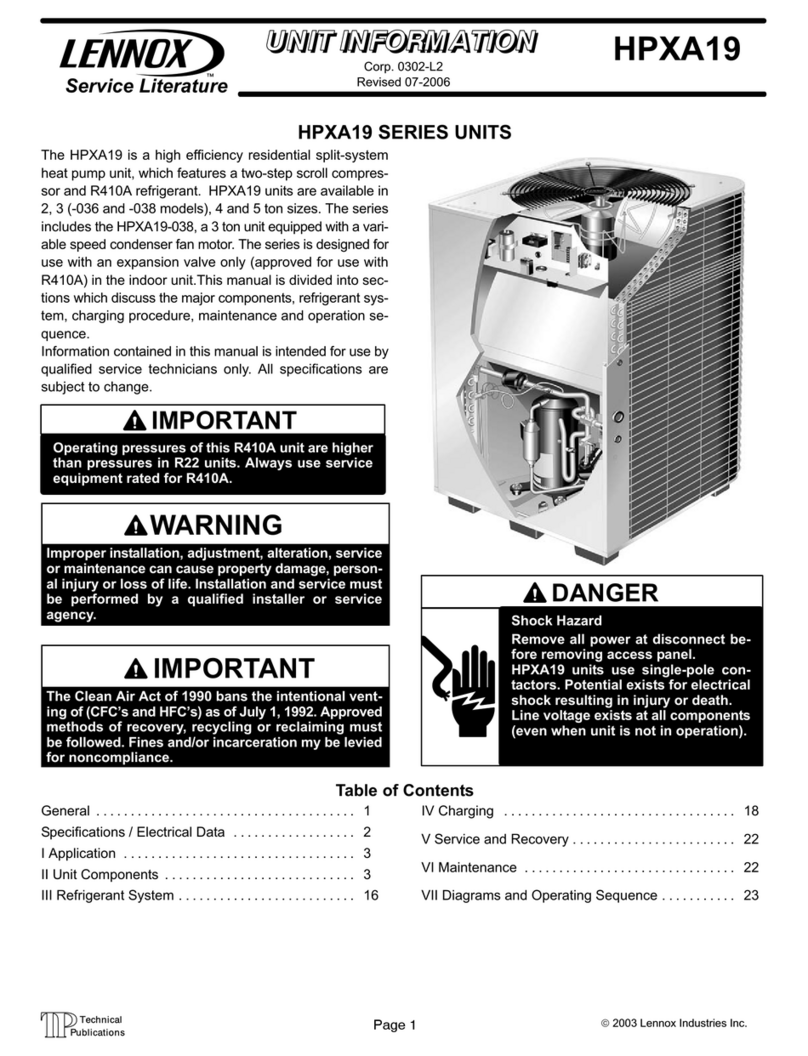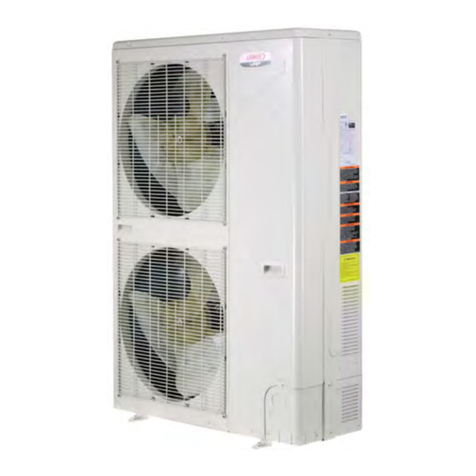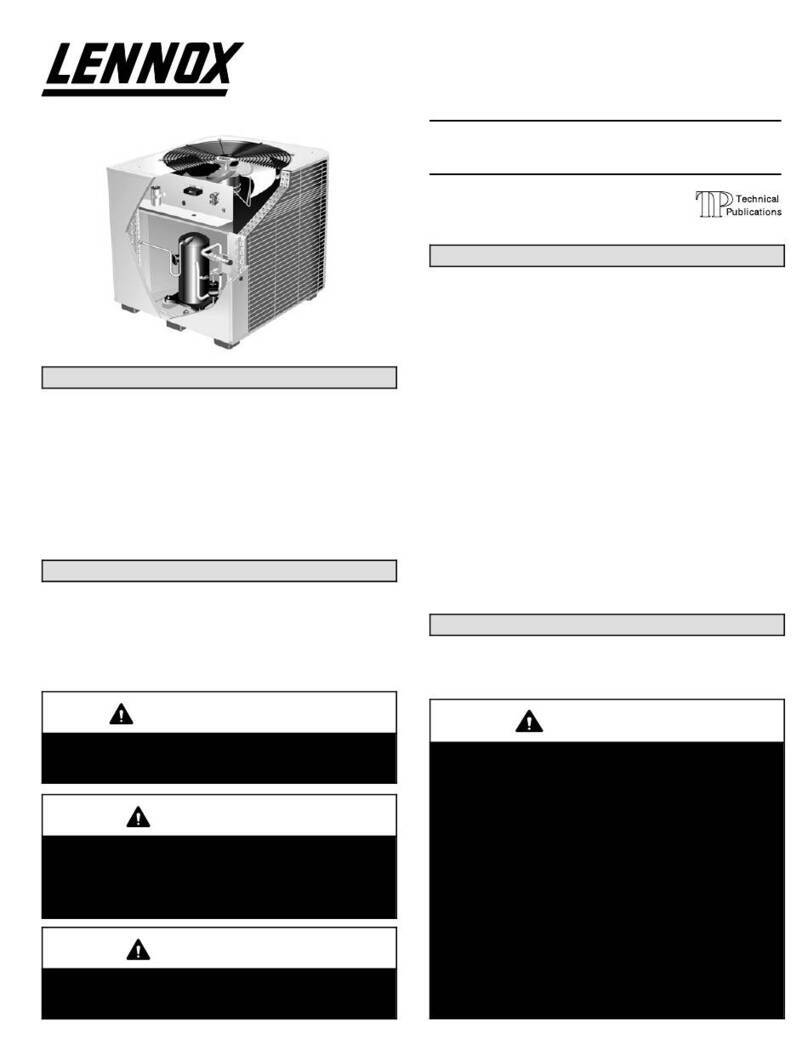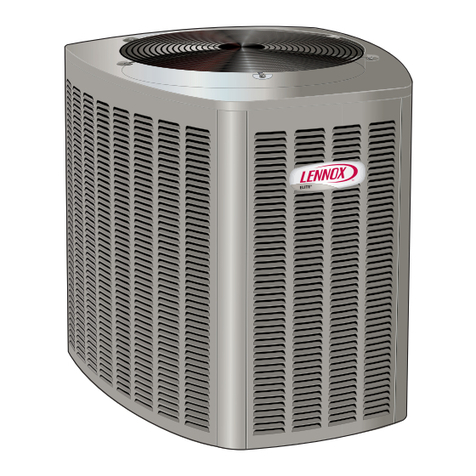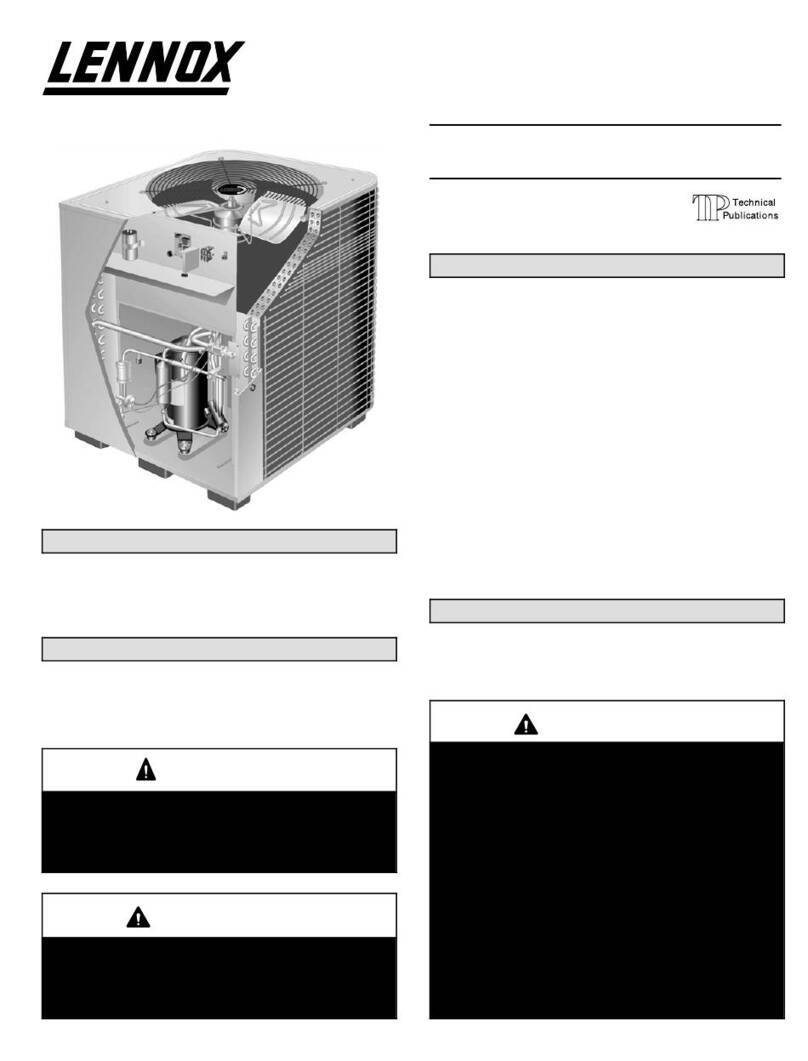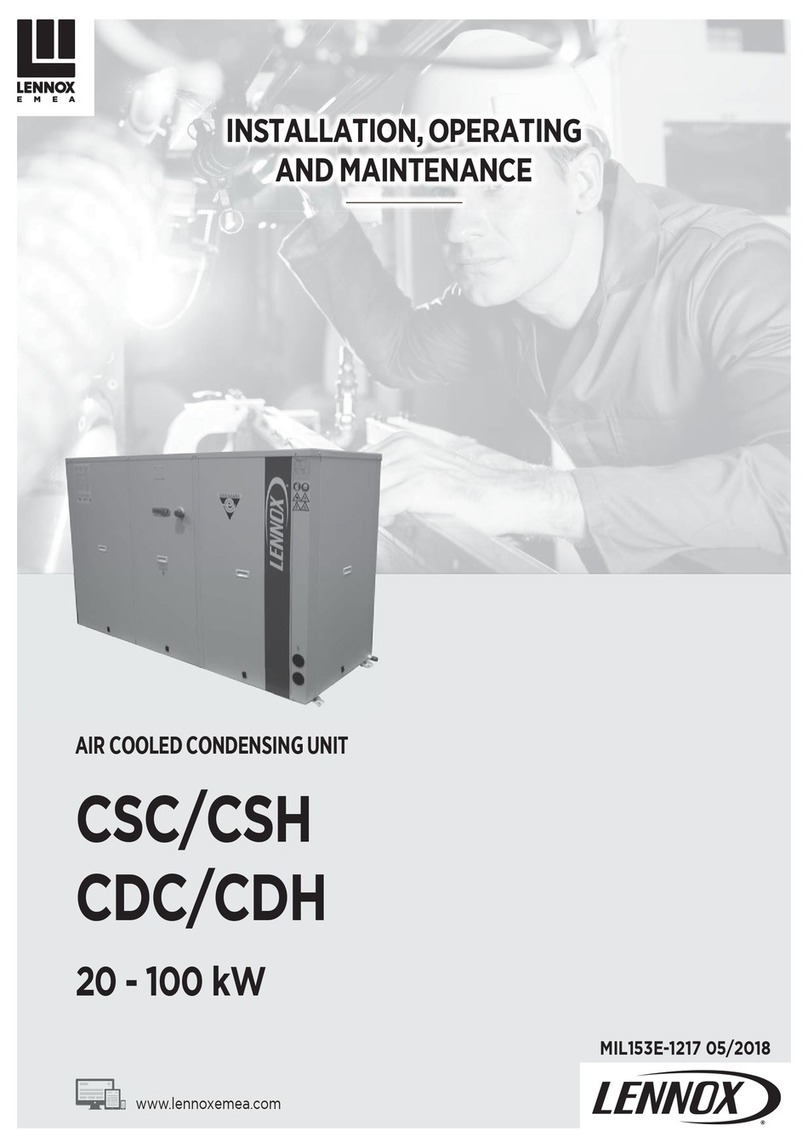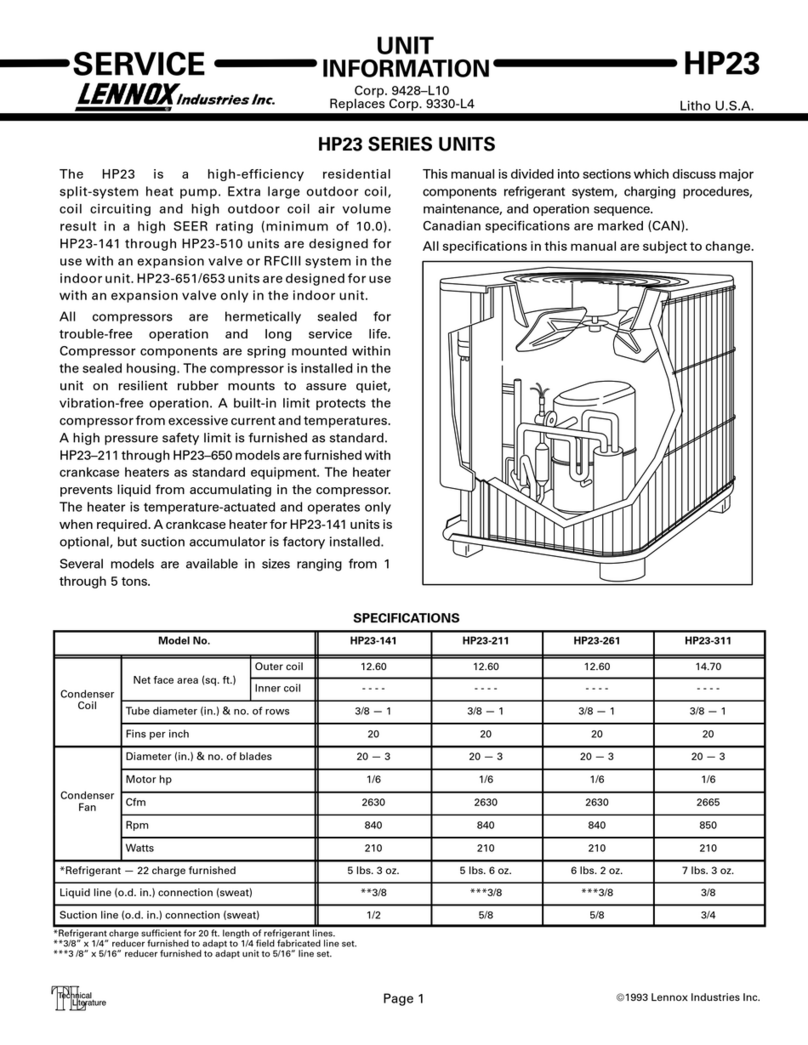
13CHP units are equipped with a defrost control board that
includes the combined functions of time/temperature de-
frost control, defrost relay, diagnostic LEDs and a low volt-
age terminal strip. See figure 9.
The control provides automatic switching from normal
heating operation to defrost mode and back. During the
compressor cycle (call for defrost), the control accumu-
lates compressor run time at 30, 60 or 90-minute field-ad-
justable intervals. If the defrost thermostat is closed when
the selected compressor run time interval ends, the defrost
relay is energized and the defrost begins.
The defrost timing jumper is factory-installed to provide a
60-minute defrost interval. If the timing selector jumper is
not in place, the control defaults to a 90-minute defrost in-
terval. The maximum defrost period is 14 minutes and is
not adjustable. See figure 9 for the location of the defrost
interval timing pins.
A test option is provided for troubleshooting. The test
mode may be started any time the unit is in the heating
mode and the defrost thermostat is closed or jumpered. If
the jumper is in the TEST position at power up, the control
will ignore the test pins. When the jumper is placed across
the TEST pins for 2 seconds, the control will enter the de-
frost mode. If the jumper is removed before an additional
5-second period has elapsed (7 seconds total), the unit
will remain in defrost mode until the defrost thermostat
opens or 14 minutes have passed. If the jumper is not re-
moved until after the additional 5-second period has
elapsed, the defrost will terminate and the test option will
not function again until the jumper is removed and reap-
plied.
The defrost control board includes a compressor delay
function which cycles the compressor off for 30 seconds
while going into and coming out of the defrost cycle. This
function is activated when the jumper is removed from the
compressor delay pins.
NO TE -- The 30-second compressor delay is not function-
al when the TEST pins are jumpered.
Defrost Interval
Timing Pins
Test Pins
Compressor
Delay Pins
Reversing Valve -
Low Pressure/
Loss of Charge --
Switch
Defrost T'stat j
High Pressure i
Switch
Defrost Control Board
PI (_ FAll
- LO*PS
_Diagnostic
LEDs
24V Terminal
Strip
Connections
Figure 9
The defrost thermostat is located on the liquid line be-
tween the check/expansion valve and the distributor.
When the defrost thermostat senses a liquid line tempera-
ture of 42°F or cooler, the thermostat contacts close and
send a signal to the defrost control board to begin the de-
frost timing. The defrost thermostat also terminates the
defrost when the liquid line temperature warms to 70°F.
The defrost control board includes HI-PS and LO-PS ter-
minals to receive signals from the optional high pressure
switch and loss of charge switch. These optional switches
must be ordered separately and field-installed,
During a single demand cycle, the defrost control locks
out compressor operation after the fifth time that the cir-
cuit is interrupted by any pressure switch wired to the con-
trol board. In addition, the diagnostic LEDs indicate a
locked-out pressure switch after the fifth open pressure
switch occurrence, Compressor operation remains
locked out until power to the board is interrupted, then re-
established, or until the jumper is applied to the TEST pins
for 0,5 seconds,
NOTE -- The defrost control board ignores input from the
optional loss of charge switch terminals as follows:
During the test mode;
During the defrost cycle;
During the 90-second start-up period;
During the first 90 seconds following
a reversing valve switch between the
heating and cooling modes.
The defrost control board includes two diagnostic
LEDs. LED codes indicate operating status. The diag-
nostics codes are given in table 2.
Table 2
Defrost Control Board Diagnostic LEDs
Mode Green LED Red LED
(DS2) (DS1)
No power to OFF OFF
board
Normal
Operation /Simultaneous Slow Flash
Power to Board
Anti-Short Cycle Alternating Slow Flash
Lockout
Loss of Charge
Pressure Switch OFF Slow Flash
Fault*
Loss of Charge
Pressure Switch OFF ON
Lockout*
High Pressure Slow Flash OFF
Switch Fault*
High Pressure ON OFF
Switch Lockout*
* These fault codes require installation of optional loss
of charge and high pressure switches.
Page 10

